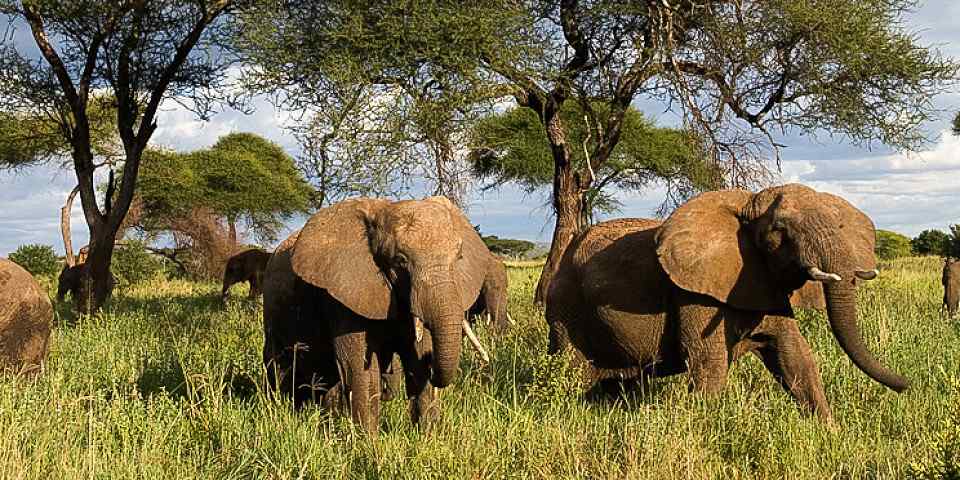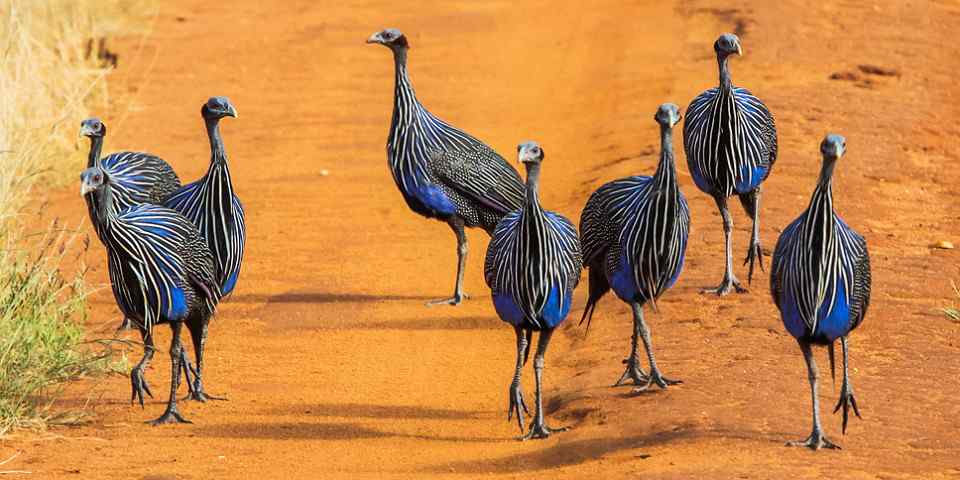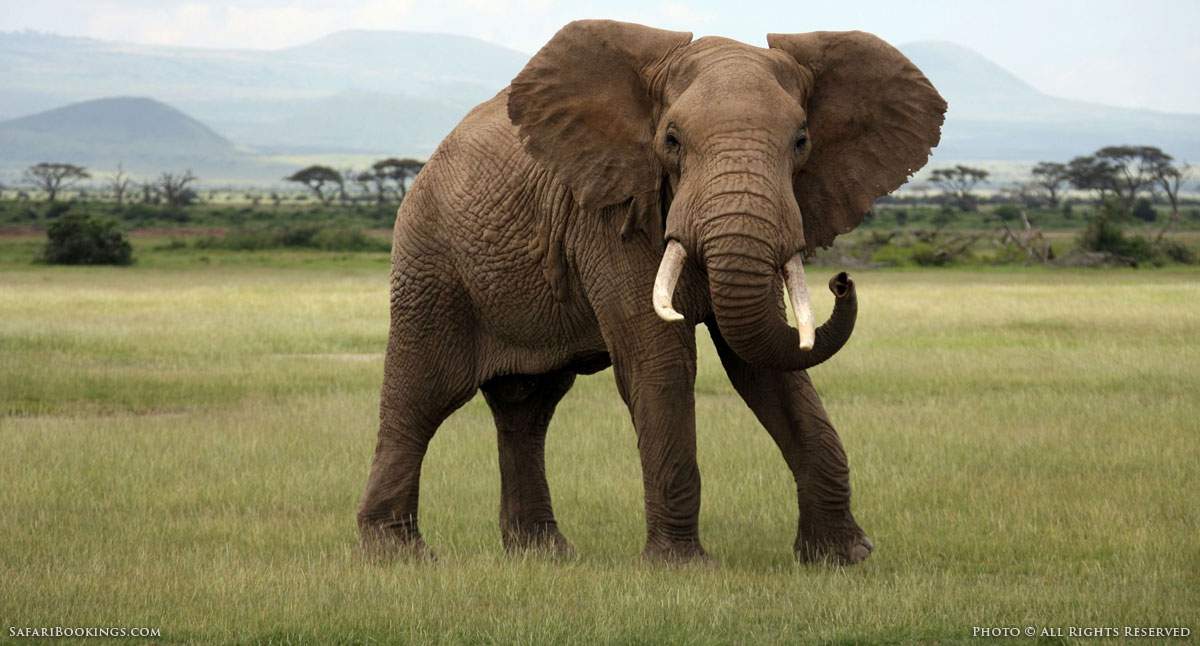
What Should You Do When You Encounter an Elephant on a Self-Drive Safari?
 By Paul Smitz
By Paul Smitz Paul has long written about his travel experiences, including many years as a Lonely Planet guidebook author, and in recent times has been joyfully exploring wildlife-rich southern Africa.
It was on my very first trip to Africa that I got some valuable lessons in what to do when you encounter an elephant in the wild. I was on an extended 4WD tour of Zambia, with some cross-border trips into Botswana, Namibia and Malawi thrown in for the sheer hell of it. The first of those excursions took me to northern Botswana’s fabled Chobe National Park, where animals seemed to march out of the bush just to give me the biggest possible thrill on day one of my safari experience.
Heading out with a friend on a self-drive tour of Chobe’s dirt tracks, I breathlessly took in, in quick succession, some graceful impala, a family of giraffes, sleek sable antelopes, buffalo, kudu (another type of antelope, the one with the huge serpentine horns), and a young male lion on the roadside who reacted to my gawping with complete disinterest.

Even the sight of a dung beetle heroically pushing a massive chunk of poo down the road had me captivated. And, of course, I came across that biggest and most impressive of African beasts: the elephant.
Spot the Elephant
We were driving along a track that skirted the southern bank of the Chobe River, the giant waterway that divides Botswana from Namibia’s remote Caprivi Strip, when my friend suddenly noticed something up ahead – a large shape jammed in-between a couple of big trees, right beside the road. We edged the car closer and, to our surprise, found ourselves looking at a young calf snuggled up against a sizeable elephant (presumably its mother), their dusty grey hides effectively camouflaging them against the shadow-laden trees. That was my first lesson in elephant encounters: the way the animals can blend into the African bush, and their eerie ability to make no noise when they walk (thanks to their cushion-like soles, the equivalent of strapping pillows to your feet), mean you sometimes don’t see them until you’re practically on top of them.
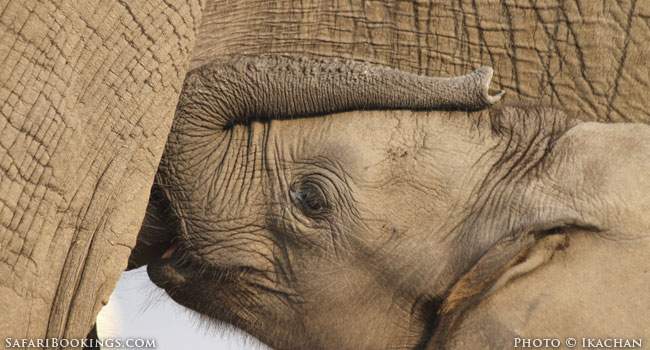
Our dilemma now was this: Was it OK to just drive slowly past the pair of elephants on that narrow track? Or would that cause the mother to freak out and charge, in which case we should either wait for them to move on or turn the car around? A bit unnerved by the close encounter, we chose to head back the way we’d come.
Patience or Panic?
In subsequent days, I had a number of conversations with national park staff, lodge owners and fellow travellers about what to do when you suddenly come across an elephant while driving in the African wilds. I’m talking here about self-driving, not the safari truck excursions in national parks where you’re chauffeured by experienced guides who can recognise a problematic animal from a mile away. Anyway, I got all manner of conflicting advice.
Sometimes I was told to switch off the car and wait until the elephant had departed the scene. The idea was that the rumble of an automotive engine could be interpreted by the animal as a kind of challenge – like throwing down a glove to prompt a duel (admittedly a questionable analogy, as elephants don’t usually wear gloves). According to this theory, keeping quiet would reassure the elephant that you weren’t going to cause any trouble, and eventually it would go on its merry way. OK, that sounded reasonable enough.
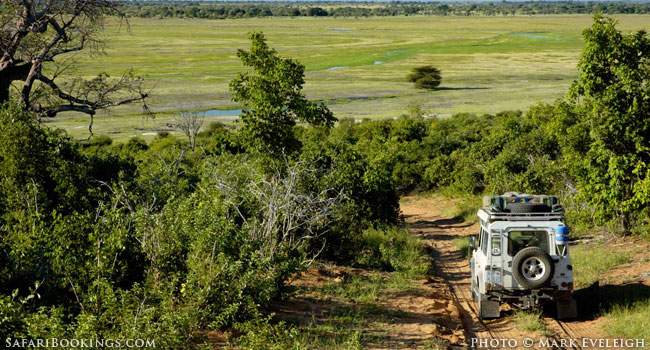
But then sometimes people suggested the opposite approach, telling me to ‘hit the panic button’ (even though I was pretty sure that wasn’t standard equipment in our Land Rover) and to ‘Get the hell out of there as quickly as you can!’ This course of action also had its own logic, of the proverbial kind: ‘always assume the worst’, ‘safety is the better part of valour’ etc. So, which of these two options was the right one?
Bailed Up by a Bull
A week or so later, my friend and I put the first option to the test at Lower Zambezi National Park, a spectacular combination of flood plain and escarpment in southern Zambia.

We’d dawdled in the late afternoon at a river crossing in the park’s south-west, watching elephants converge on the water for a drink, and were driving back to our lodge when we found our route blocked by a young bull. As surprised by our sudden appearance as we were by his, the bull planted his feet in the dirt and squared off with our car. The track was narrow and bordered by thick bush, so we couldn’t go around him. Reversing back the way we’d come didn’t appeal either, as we’d probably run into other elephants making their way back up the riverbank. So, taking a deep breath, my friend (the designated driver that day) turned off the engine and we both went as still as possible.
The following 15 minutes or so rank as some of the most nerve-racking and simultaneously exhilarating minutes I’ve experienced so far in Africa. While we sat in our Land Rover, as unmoving and mute as a pair of crash-test dummies, the elephant walked right up to the car and began waving his trunk over the hood, as if trying to make sense of us by sniffing. Then, as we watched, mesmerised, he dangled one big foot in the air in front of us and began swaying it to and fro, giving me a momentary vision of being stomped into a metallic pancake. It was only later that I discovered that elephants actually ‘hear’ through complex nerve endings in their feet, which can pick up vibrations over long distances – our fellow may have just been trying to listen to us.
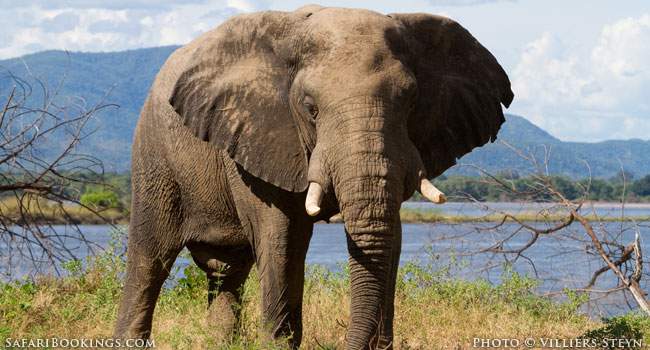
Eventually, the elephant lost interest in us, wandering off to munch on some nearby branches, while we started the car and slowly rolled away. And so, on the one hand, the advice about staying put and keeping quiet seemed to have worked – we’d emerged from our encounter unscathed. On the other hand, my friend and I quickly agreed that we never wanted to feel that vulnerable in the presence of a massive pachyderm again, so we decided that if we came across another elephant on that Lower Zambezi trail, we’d do our best to hightail it out of there.
A Speedy Retreat
Half an hour later, we got our chance to test that second option. We were zipping along the rutted track, keen to get back to our lodge and debrief about the afternoon’s events over some cold drinks, when we rounded a bend to find the windscreen suddenly filled by another bull – a much bigger and (judging by the look it gave us when we shuddered to a stop in front of it) crankier one. Without a second’s hesitation, my friend jammed the car into reverse and sped backwards, only stopping once we’d put a few hundred metres between us and the elephant, who declined to follow us, clearly having better things to do. After waiting about 20 minutes, we crept back up the track and, finding the path ahead now clear, hastily made our way back to our accommodation and some well-deserved beers.

Yes, we’d managed to weather another unexpected elephant episode without suffering any hurt (wounded pride excepted) – big tick for that – but again, the whole thing left us feeling conflicted. It hadn’t exactly been the most convincing manoeuvre: it was extremely reactionary and hasty. And it was possibly unnecessary. After all, did that elephant really pose a threat to us just because we’d startled it? Surely there was a way to gauge the temperament of an animal so that you could keep your distance if need be, but otherwise you could be a little more relaxed about it and make the most of a unique safari spectacle.
Warning Signs
My experiences on the road in southern Africa since those early encounters in Botswana and Zambia have taught me that, while wild animals are obviously never completely predictable, there are some fairly reliable indicators that an elephant might be about to cause you some trouble, in which case you need to steer clear of it.
The animal’s level of irritation is the biggest warning sign, which is best assessed by the state of its ears. If an elephant’s ears are just flopping about, the way they do when it walks, then you’re on fairly safe ground – for now at least. If the ears have fanned out from the elephant’s head, as if they’ve just caught a strong gust of wind, then the animal is annoyed and may charge – though if it does, it’s probably going to be a fake charge (which will give you a fake heart attack). If the ears are pinned back, the trunk is curled in and/or the tusks are raised, it’s time to be somewhere else, preferably somewhere in another latitude.
Another thing to look out for is a thick secretion running down the side of the elephant’s head. This means you’re faced with a bull in musth, a condition that causes an enormous surge in the animal’s testosterone levels, with an accompanying surge in highly aggressive behaviour. Needless to say, you should stay well away from an elephant in musth – the normal rules, if you can call them that, just don’t apply.
Expect the Unexpected When You Encounter an Elephant
There’s no exact science at work here. When it comes to dealing with an elephant, you should expect the unexpected. But there’s no need to adopt an attitude of permanent near-panic either – calm decisiveness is your true ally in such situations.

Going back to the encounter I described at the start of this piece, it probably would’ve been OK to slowly cruise past the mother and calf who were standing in the trees, because there was no agitation on display, and the wild inhabitants of Chobe have become pretty habituated to rubberneckers in cars. Then again, there was nothing wrong with the firm decision to turn the car around, and the memory of meeting my first elephants on an African road is no less vivid or wonderful because of it.
Interesting facts about the elephant.
 By Paul Smitz
By Paul Smitz Paul has long written about his travel experiences, including many years as a Lonely Planet guidebook author, and in recent times has been joyfully exploring wildlife-rich southern Africa.
African Safari Tours
-
![7-Day Amboseli, Naivasha, Hells Gate, Nakuru, Masai Mara]()
7-Day Amboseli, Naivasha, Hells Gate, Nakuru, Masai Mara
$1,705 to $2,365 pp (USD)
Kenya: Private tour
Mid-range Lodge & Tented CampYou Visit: Nairobi (Start), Amboseli NP, Lake Naivasha (Naivasha), Hell’s Gate NP, Masai Mara NR, Nairobi (End)

Meektrails Safaris
4.8/5 – 117 Reviews
-
![7-Day Tanzania Wildlife Luxury Safari]()
7-Day Tanzania Wildlife Luxury Safari
$3,153 pp (USD)
Tanzania: Private tourLuxuryLodge & Tented Camp
You Visit: Kilimanjaro Airport (Start), Tarangire NP, Mto wa Mbu (Town), Serengeti NP, Central Serengeti, Ngorongoro Crater, Arusha (End)

Ozon Light Tours
5.0/5 – 70 Reviews
-
![8-Day Amboseli, the Tsavo Parks & Diani Beach Tour]()
8-Day Amboseli, the Tsavo Parks & Diani Beach Tour
$2,424 to $2,552 pp (USD)
Kenya: Private tour
Mid-range Tented Camp & ResortYou Visit: Nairobi (Start), Amboseli NP, Tsavo West NP, Tsavo East NP, Diani Beach, Nairobi (End)

Rochar Africa Expeditions
4.9/5 – 15 Reviews



 Subscribe to our newsletter
Subscribe to our newsletter
 Follow us on Instagram
Follow us on Instagram
 Follow us on X
Follow us on X


